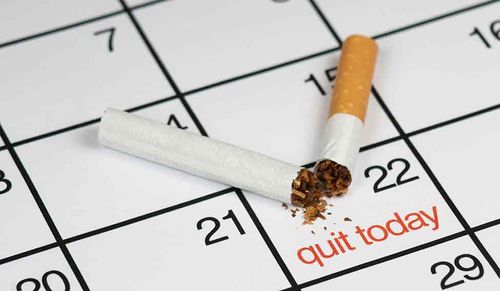Having a younger sibling can be annoying, but it is also good for your health.
According to a US study published in the journal Pediatrics, children who have a little sister or brother before they reach first grade are less likely to be obese. On the other hand, children who did not have a younger sibling by the time they reached first grade were nearly three times more likely to be obese. The study was based on 697 children across the United States.
While only less than 5 per cent of children who had a younger sibling born when they were between the ages of 3 and 4 were obese, nearly 13 per cent of the children who did not have a younger sibling born by that time were obese.
While the exact reason for this healthier outcome for older siblings is not known, it could be that parents make positive lifestyle changes when they have more children. The authors speculate that parents may change the way they feed their child once a sibling is born. They may stop force-feeding them. Children develop long-lasting eating habits at around three years of age.
A child with a younger sibling may also spend less time playing video games or watching television, and spend more time playing together and thus become more physically active. “Maybe you go to the park more, or maybe there is just more activity in the house,” the study author suggested.

Stop smoking! Now!
What is the best way to quit smoking? Cold turkey or gradual tapering? A British study published in the Annals of Internal Medicine finds that abrupt stopping is much more effective than trying to quit gradually.
The study randomly assigned 697 heavy smokers to either an abrupt quitting or a gradual reduction group. All of them set a quit date for two weeks. The abrupt stopping group continued to smoke normally until their quit date, then stopped suddenly. The gradual group reduced their smoking gradually by 75 per cent over two weeks.
Both groups had access to behavioural counselling, nicotine patches and nicotine replacement therapy before and after quit day.
At four weeks, 39 per cent of the gradual group had stopped smoking compared to 49 per cent of the abrupt group. At six months, 16 per cent of the gradual group stayed abstinent compared to 22 per cent of the abrupt group.
“Quitting smoking abruptly is more likely to lead to lasting abstinence than cutting down first, even for smokers who initially prefer to quit by gradual reduction,” the study concluded.

Dada duo for twins
Fraternal twins born in Vietnam have been fathered by two different men. The twins had DNA testing because the family thought they did not look alike. One has thin, straight hair, while the other has thick, wavy hair.
Heteropaternal superfecundation happens when a woman's eggs are fertilised by two men within the same ovulation period. It is extremely rare; there are only less than 10 known cases of twins with different fathers in the world.
When a woman ovulates, she usually produces only one egg. Fraternal twins happen when a woman releases two eggs during ovulation and both eggs are fertilised.
In this case, the woman may have had sex with two different men within a short period of time and sperms from these men would have fertilised two eggs during the same menstrual cycle.
The husband was the biological father of only one child. DNA testing showed that the woman was the mother of both kids, thus ruling out a hospital mix-up.
Did You Know
More people in the world are now obese than underweight. By 2025, around one-fifth of the adults globally would be obese. The number of obese people rose from 105 million in 1975 to 641 million in 2014.
The Lancet

What waistline foretells
Your waistline may be a better predictor of your heart disease risk than your overall weight or body mass index.
Having an apple-shaped body is a strong predictor of left ventricular dysfunction, which can lead to serious heart disease, than having a pear-shaped body. The study focused on 200 diabetic men and women without heart disease. Abdominal obesity was strongly associated with regional left ventricular dysfunction, independent of overall weight or body mass index.
The left ventricle is the chamber of the heart that pumps oxygen-rich blood. A dysfunction in the left ventricle can cause blood to back up into the lungs and lower extremities, which can lead to heart failure and increases the risk of sudden cardiac arrest. People with apple-shaped bodies are already known to have a greater risk of metabolic syndrome—which includes high blood pressure, high sugar levels and high cholesterol—as well as coronary artery disease and heart failure.
“This study confirms that having an apple-shaped body—or a high waist circumference—can lead to heart disease, and that reducing your waist size can reduce your risks,” the study author added.
The findings were presented at the 2016 American College of Cardiology Scientific Session in Chicago.
Did You Know
Acupuncture is an effective tool in easing hot flashes and improving quality of life in women with breast cancer.
Journal of Clinical Oncology

Fast against crab
Breast cancer survivors can reduce their risk of recurrence by fasting for at least 13 hours per night, according to a study published in JAMA Oncology.
Animal studies have shown that prolonged overnight fasting can protect mice fed a high-fat diet from abnormal blood sugar levels, inflammation and weight gain, all of which are tied to poor cancer outcomes.
To find out whether duration of nightly fasting can influence breast cancer recurrence, the researchers analysed data of 2,413 women, aged 27 to 70, who were diagnosed with early-stage breast cancer.
During 7.3 years of follow-up, 390 women had recurrence of breast cancer. The average fasting duration was 12.5 hours per night.
Women who fasted fewer than 13 hours nightly had a 36 per cent higher risk for breast cancer recurrence compared to women who fasted 13 or more hours per night. Shorter fasting, however, did not increase the risk for death from breast cancer or from any other causes.
Each two-hour increase in nightly fasting was associated with lower haemoglobin A1C levels—a measure of blood sugar levels over a period of several months—and a longer sleep duration.
“Circulating sugar levels can be fuel for tumours. We have a lot of data suggesting that when people have bad sleep or shorter sleep duration, they may have a higher cancer risk," the study author noted.
“Given the associations of nightly fasting with glycemic control and sleep, we hypothesise that interventions to prolong the nightly fasting interval could potentially reduce the risk of type 2 diabetes, cardiovascular disease and other cancers. Our study introduces a novel dietary intervention strategy and indicates that prolonging the length of the nightly fasting interval could be a simple and feasible strategy to reduce breast cancer recurrence,” the authors conclude.

Folks, no caffeine
It is known that women need to limit caffeine intake during pregnancy. But a new study published in the journal Fertility and Sterility suggests that men’s caffeine intake matters, too.
Miscarriages are more likely if the woman or her partner consumes more than two caffeinated drinks a day during the weeks leading up to conception and in women who continue to drink caffeinated beverages during the first seven weeks of pregnancy.
To analyse the impact of lifestyle factors such as daily use of cigarettes, caffeinated and alcoholic beverages and multivitamins on the risk of miscarriages, the researchers followed 344 couples during this period and found that 98 women, or 28 per cent, suffered miscarriage.
Women who consumed more than two caffeinated drinks daily before conception were 74 per cent more likely to experience a miscarriage than those who consumed less. The risk of miscarriage was 73 per cent greater if their male partners consumed more than two caffeinated beverages a day in the weeks before conception.
Women 35 or older had nearly twice the risk of miscarriages as younger women which could be attributed to advanced age of sperm and egg in older couples or longer exposure to environmental substances.
Taking multivitamins, however, had a protective effect; daily multivitamin intake in the weeks before conception was associated with a 55 per cent lower risk for miscarriage. Women who continued to take the vitamins through early pregnancy had a 79 per cent reduced risk of miscarriages.
“Our findings provide useful information for couples who are planning a pregnancy and who would like to minimise their risk for early pregnancy loss,” said the study’s first author.
Less hungry
Interventional radiologists at Johns Hopkins have developed a new, minimally-invasive, image-guided treatment to aid weight loss in severely obese people.
Bariatric arterial embolisation (BAE) involves injecting microscopic beads to decrease blood flow to a specific portion of the stomach called the fundus, which produces most of the body's hunger hormone called ghrelin. Suppressing some of the body's hunger hormones can lead to reduced appetite and aid weight loss.
The procedure was successfully tried on seven severely obese but otherwise healthy adults, without any major adverse events. Patients lost on an average 13.3 per cent of their excess weight over the next six months. Ghrelin levels went down, and the patients saw considerable hunger reduction and their quality of life improved."These early results demonstrate that BAE appears to be effective in helping patients lose a significant amount of weight in the short and intermediate term. Compared to a surgical gastric bypass procedure, BAE is significantly less invasive and has a much shorter recovery time," the lead researcher added.
The findings of the clinical trial were presented at the Society of Interventional Radiology's 2016 Annual Scientific Meeting.
Did You Know
Eating starchy and sugary food that have a high glycaemic index can increase the risk of lung cancer, especially among non-smokers.
In a study of 1,905 participants with lung cancer and 2,413 healthy controls, those with the highest consumption of high GI food had a 49 per cent greater risk for lung cancer. Non-smokers were more than twice as likely to develop lung cancer if they ate a high glycaemic index diet.

Hearty, brainy
What is good for the heart is also good for the brain. Following a heart-healthy lifestyle may also mean less decline in brain processing speed, thinking ability and memory as you age.
For the study in the Journal of the American Heart Association, researchers followed 1,033 participants, average age of 72, for six years. They were tested for memory, thinking and brain processing speed at the start of the study and 722 participants retook the brain tests six years later. The researchers also examined how closely the participants met the American Heart Association's "Life's Simple Seven"—factors that promote good cardiovascular health including tobacco abstinence, maintaining a healthy weight, being physically active, following a healthy diet, and maintaining healthy blood pressure, cholesterol and blood sugar levels.
None of the participants met all seven goals: 1 per cent met six; 4 per cent met five; 14 per cent met four; 30 per cent met three; 33 per cent met two; 15 per cent met one and 3 per cent met none of the seven goals.
Participants who met more heart-healthy goals had better brain-processing speed at the start of the study. This link was strongest for people who were not smokers, had a healthy weight and ideal blood sugar levels.
At follow-up, having more heart-healthy goals was associated with less deterioration in brain processing speed, memory and executive function. Executive function involves focusing, time management and other cognitive skills.
"Achieving the health metrics of “Life's Simple 7” is associated with a reduced risk of strokes and heart attacks, even among the elderly. And the finding that they may also impact cognitive, or brain function underscores the importance of measuring, monitoring and controlling these seven factors by patients and physicians," said the study's lead author.
Did You Know
People infected with HIV are at a greater risk of alcohol-related health problems at lower levels of alcohol use compared with uninfected individuals.
Drug and Alcohol Dependence

Diet water
What is the best diet drink? Plain old water could be your answer to controlling your weight and reducing your intake of sugar, sodium and saturated fat.
For the study in the Journal of Human Nutrition and Dietetics, researchers examined the dietary habits of 18,311 adults who reported everything they ate or drank over the course of two days that were three to 10 days apart. On average, the participants consumed about 4.2 cups of plain water daily. Increasing water consumption by just 1 per cent reduced total daily calorie intake as well as saturated fat, sugar, sodium and cholesterol intakes.
Those who added one to three cups of water daily consumed 68 to 205 fewer calories a day, and their sodium intake fell by 78 to 235gm. Sugar consumption also fell 5 to 18gm and daily cholesterol intake dropped by 7 to 21mg.
The benefits were more profound among young and middle-aged men than women and older men. This could be because these groups tend to consume more calories on a daily basis. “The impact of plain water intake on diet was similar across race/ethnicity, education and income levels and body weight status. Promoting plain water intake could be a useful public health strategy for reducing energy and targeted nutrient consumption,” the study concluded.
D doing good
Taking vitamin D supplements can improve heart function in heart failure patients, according to a British study presented at the American College of Cardiology 65th Annual Scientific Session. For the study, 163 heart failure patients who were already being treated with beta-blockers, ACE-inhibitors and pacemakers were assigned to take either vitamin D or placebo pills once a day for a year. The patients’ heart function was analysed using cardiac ultrasound.
Heart pumping function improved from 26 per cent to 34 per cent in patients taking vitamin D, while there was no change in those taking the placebo. "This is a significant breakthrough for patients. It is the first evidence that vitamin D3 can improve heart function of people with heart muscle weakness—known as heart failure,” the study author noted.
The improvements seen with vitamin D supplements may help some patients avoid being fitted with implantable cardioverter defibrillator (ICD) devices which can detect irregular heart rhythms and deliver shocks to restore a normal heartbeat.
"ICDs are expensive and involve an operation. If we can avoid an ICD implant in just a few patients, then that is a boost to patients."

Eye may turn cloudy
Patients who get lens implant surgery to correct vision problems have an increased risk of developing cataracts or elevated pressure around the eyes within 10 years after surgery, according to a Swiss study published in JAMA Ophthalmology.
The researchers followed 78 patients, of an average age of 39 years, who had a procedure known as posterior phakic lens implantation. It involves placing a lens in front of the eye's natural lens.
At five years, 40.9 per cent of the patients had developed lens opacity, or cataracts. By 10 years, 55 per cent of them did. By 10 years, 12 eyes also developed ocular hypertension, elevated pressure in and around the eye that can lead to glaucoma and required topical medication.
At five years, a surgery to correct cataracts known as phacoemulsification had to be done in five eyes, and within 10 years this procedure was done on 18 eyes.
The findings suggest that patients, especially young ones, who will have the implants long-term, should be advised about the possible long-term side effects before the procedure.

Short, fat, sad
Are short men and obese women at a financial disadvantage?
According to scientists at the University of Exeter, shorter men and overweight women may have lower chances in life, including a lower income. They are less likely to have a higher education, a good job or higher socioeconomic status.
The researchers analysed data that studied 400 genetic variants associated with height and 70 associated with body mass index from 1,20,000 participants, aged between 37 and 73. They then assessed the actual height and weight of the participants and information provided by them about their lives.
Shorter men tend to have lower levels of education, job status and income. A man who was genetically predetermined to be 3 inches shorter would likely have an annual income that was £1,500 lower than his taller counterpart. Taller men are also more likely to work in a skilled or professional job.
Overweight women tend to have lower income and greater hardships. A woman who was 6.3kg heavier is likely to earn £1,500 less per year than another woman of the same height who was slimmer.
Factors such as obsession with body image and discrimination or low self-esteem and depression may be to blame, the study authors suggest. “These findings have important social and health implications, supporting evidence that overweight people, especially women, are at a disadvantage and that taller people, especially men, are at an advantage,” the study published in the BMJ concluded.
Contributor: SHYLA JOVITHA ABRAHAM






